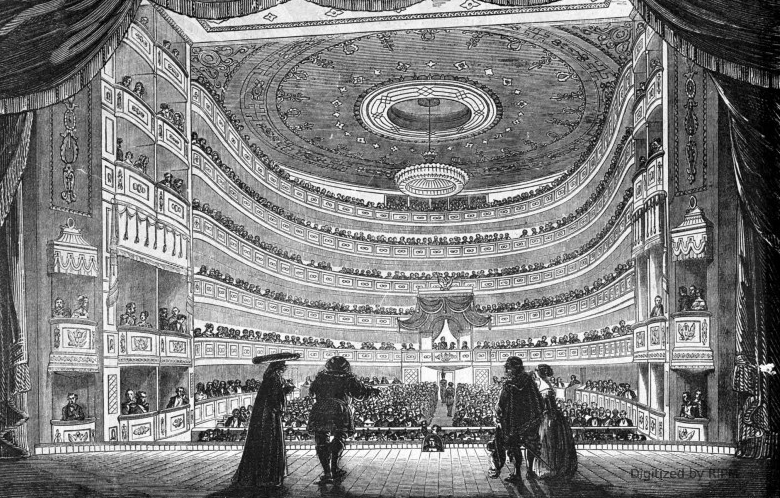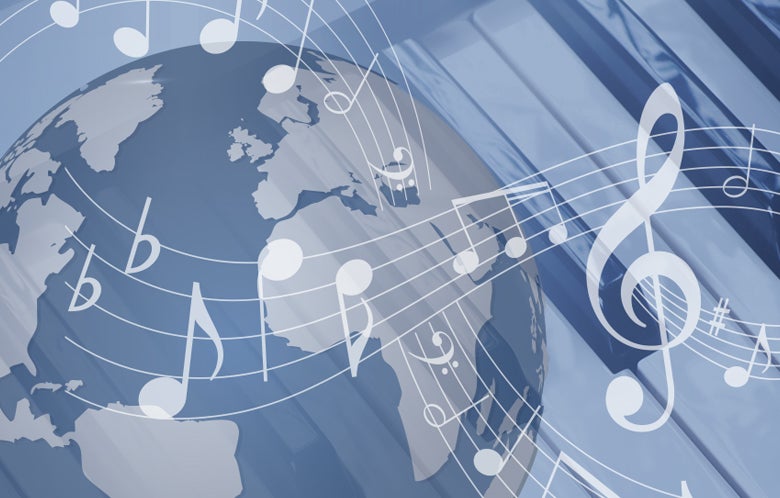When music historian and Le Répertoire international de la presse musicale (RIPM) founder H. Robert Cohen was working on his doctoral thesis, locating the source material alone took many months. Musicologists like Dr. Cohen uncover and interpret the untold stories of music and musical life that are both instructive and often overlooked by history.
Founded in 1980, RIPM is one of four international cooperative bibliographic undertakings in music, alongside Le Répertoire international des sources musicales (RISM), Le Répertoire international de littérature musicale (RILM), and Le Répertoire international d’iconographie musicale (RIdIM). The MLA describes these projects as being “…without doubt, the most important current bibliographic documentation projects in the field of music research.” Of the four “Rs”, RIPM alone focuses on music and musical life from approximately 1760 to 1966.
We asked Dr. Cohen about RIPM’s history and mission:
What are some of the challenges for researchers studying music of this period?
Before RIPM was established, researchers faced three fundamental problems:
- Copies of the journals are scattered throughout Europe and the Americas and often difficult to locate, often incomplete and at times in very poor condition.
- Periodicals lack indexes.
- The monumental size of this corpus of literature is overwhelming. Nearly 4,500 specialized music periodicals were published between 1760 and 1966.
When did the movement to preserve and archive literature about music and musical life from this period begin?
The importance of gaining access to the musical press has been recognized since the 1930s. But it was not until 1980 that RIPM was created to resolve this impasse on an international scale.
Why are these music periodicals valuable to researchers?
Access to the musical press permits us to view musical life as it was perceived by its contemporaries. In this way, it provides us with a different perspective from that offered by historians. It also provides signposts to guide us in this frequently unexplored literature and to inform us of what might be of interest and why.
Much of the world’s music has not been recorded and the history books give us only a distant view. RIPM’s mission is to capture the content of the musical press for this important period in our history and make it available in a searchable format.
Much of the world’s music has not been recorded and the history books give us only a distant view. RIPM’s mission is to capture the content of the musical press for this important period in our history and make it available in a searchable format.
Much of the world’s music has not been recorded and the history books give us only a distant view. RIPM’s mission is to capture the content of the musical press for this important period in our history and make it available in a searchable format.
How has RIPM addressed these challenges?
RIPM functions with collaborators in more than 20 countries and treats music periodicals published in more than 30 countries. Collaborators select journals for treatment, index journals, edit data and participate in scanning and reconstructing complete runs of journals. RIPM has its own digitization laboratory and works with digitization centers all over Europe and the Americas in New York, Washington D.C., Vienna, Brussels, Rome, Prague, Parma, Moscow, Bologna, London, Milano, Paris, Turin, Amsterdam, Leipzig and The Hague.
You mention that there’s a daunting amount of literature available. How is RIPM able to process that content?
We handle journals in two different ways:
- Those in the RIPM Retrospective Index to Music Periodicals with Full Text and RIPM Retrospective Index to Music Periodicals, include detailed indexing that is done by professional music researchers.
- Journals included in the RIPM Preservation Series: European & North American Music Periodicals are not annotated but the full text is searchable and search terms are highlighted on each page. For example, the full run of the publication Musical America comprises 80,000 pages, with an average of 25 subjects (or headings) per page.
How is RIPM being used as a teaching tool by academic institutions?
RIPM is used to determine the extent to which the press offers information not available in the histories of music. It permits researchers to obtain statistical information about the relative importance of composers, performers, and compositions during their lifetimes. It provides performers with a bibliographical guide to important yet often neglected compositions.
What does RIPM provide today?
RIPM publications offer online access to extensive collections of rare, primary source music periodicals dating from 1760 to the modern period. Collectively, this unique archive offers an almost daily chronicle of musical activities extending over a period of more than 200 years (1760-1966), the primary source for reception history with more than 400,000 reviews and immense possibilities for original research. It is also an essential complement to databases such as the RILM suite, MGG Online and Music Index.



